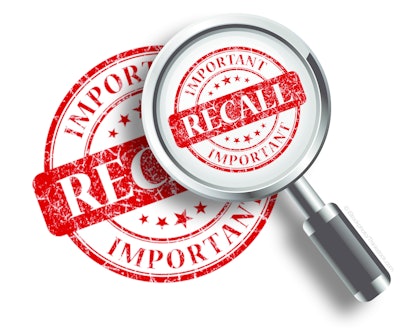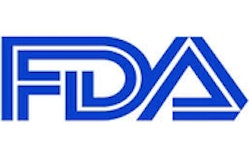
The focus on recalls in the food and beverage supply chain certainly won’t let up this year, especially with new regulations under the Food Safety Modernization Act (FSMA) on the way and heightened awareness the norm among providers and consumers alike.
Addressing intentional adulteration of food
In December, the U.S. Food and Drug Administration (FDA) issued its proposed rule on intentional adulteration of food, which for the first time, “clearly requires companies to implement a food defense program,” explains Don Hsieh, director of commercial and industrial marketing for Tyco Integrated Security.
To help companies identify the most vulnerable parts of their supply chains and operations that could be targeted, the FDA suggests that companies include in their review:
- Mixing and similar activities where a large batch of food can be susceptible to an even distribution of a contaminant
- Secondary ingredient handling where a contaminant may have access to the primary product stream
- Liquid receiving and loading where there is a high probability of uniform mixing of a contaminant
- Bulk liquid storage and handling, which are typically held in isolated areas and include agitation steps to prevent separation
While attacks on the food supply chain may seem few and far between, “Unfortunately, incidents of intentional food adulteration have occurred worldwide in different venues,” says Hsieh, who lists the following: “In 2002, an Al’ Qaida attempt to poison Rome’s water supply was foiled. In 2007, the food poisoning of 203 hospital patients in northeast China was determined to be an intentional act. And in the U.S., a plot to poison hotels and restaurants in multiple locations was uncovered in 2010.”
Kevin Pollack, vice president of sales and marketing, and business development at Stericycle, acknowledges that “while widespread food sabotage is not very prevalent, when a disgruntled employee, consumer, or competitor commits an act, it poses a public health risk and can cause reputational damage to the producer’s brand.”
So, who’s most likely to attack the food supply chain? Hsieh notes that, “In a recent survey of 600 respondents across government, first responders, public health and industry, conducted by the DomPrep Journal, 47 percent cited disgruntled employees as the most likely threat, far surpassing domestic and foreign terrorism, which came in second with 29 percent…”
At the same time, Stericycle’s Pollack notes that the FDA’s proposed rule “also aims to protect consumers from ‘economically motivated adulteration,’ which is open to interpretation, but could mean the addition of preservatives that are known to be harmful yet extend shelf life; or undeclared ‘cheaper’ ingredients, like water and sugar substitutes.”
Furthermore, foods like olive oil, fruit juice, and honey are some that are prone to adulteration for economically motivated purposes, he says.
Pollack adds that, “This type of adulteration is much more prevalent, and in order to meet the FDA’s requirements as outlined in the food defense plan, companies should review their production systems to determine if they include activities that are most vulnerable to adulteration.”
These would include the four processes listed previously, as well as other best practices such as employee training and background checks, quality assurance programs, and supply chain testing, adds Pollack.
Cargo thefts aggravate the problem
It’s worth mentioning that according to FreightWatch International, thefts of food shipments continue to lead all others, which makes keeping the food supply chain safe all the more difficult.
Hsieh confirms that, “For the past three years, food and beverage products have had the highest incidence of cargo theft as an industry because they’re difficult to track and easy to reintroduce into the supply chain and sell.”
He explains that, “While a load of electronics goods like cell phones or tablets are higher in value than food, since they are serialized and easier to track, criminals may only get 30 cents on the dollar to fence these products. In contrast, branded food products are more difficult to track and easier to resell, so criminals may get 70 cents on the dollar. Unfortunately, when these stolen products are resold into legitimate channels, there is no assurance that the product is safe to eat, especially for refrigerated products, and ultimately, both the consumer and brand reputation can be harmed.”
There is a way to turnaround this trend, however. “The electronics and pharmaceutical industries both suffered from a high incidence of cargo theft, which while still an ongoing threat, has declined due in part to implementing more stringent safety measures such a GPS tracking and monitoring,” Hsieh points out.
“Criminals tend to go after the softest targets and the recent trend of food and beverage thefts may be an indication of that,” he says. “With the introduction of some of the latest technologies such as truck and trailer security and control, it may be time for food and beverage companies to implement higher levels of preventive security practices to stem the rising tide of cargo theft.”
For his part, Pollack also sees some positive movement in combating cargo theft in the food and beverage industry, starting with enhanced security procedures.
“Sourcing, delivery schedules, travel routes, even double drivers and electronics controls are all measures being used to help prevent theft,” says Pollack.
Nonetheless, “Truck stops have been a haven for such activity, especially when the truck is stolen when the driver stops for a bathroom break. Since the trucks are readily identifiable and have systems set up to quickly transfer the merchandise, they have fencing operations that processes the product before selling it on the grey market. Some have even used eBay to unload stolen shipments.”
Putting a plan together
Inmar’s Steve Eller notes that, “While adulterated product entering the supply chain is low probability, it does carry high risk.” To mitigate that risk, implement best practices that include the right processes, people and technology to secure product in the supply chain, which he details as follows:
The Right Processes. Processes are one of the most important steps to secure product. It all begins with a plan that is global in scope to meet ever-expanding trade relationships. The global plan should be cross-functional to encompass all aspects of the supply chain with a specific plan in place for the handling of adulterated product if it does make its way downstream. Any plan should include execution and communication steps to ensure proper notification about handling of adulterated product in the supply chain and should address all stakeholders and legal entities across the globe.
The Right People. Without the right people, processes can never really get off the ground. The right people and the right vendors ensure that processes work to prevent adulterated product from reaching the consumer. To make sure the right people are touching your supply chain, stringent background checks for personnel should be employed. While all personnel are appropriately screened, access to certain aspects of the supply chain—such as receiving systems—should still be limited. As with personnel, all vendors should undergo a strict background check and vetting process.
For many companies, prevention of adulterated products is cross-functional without a clear designation of which people within the company are best at handling the issues that could arise. Supply chain associates offer an overview of the big picture of adulterated or anti-counterfeit product plans. If adulterated product makes its way downstream, the supply chain team knows which wholesalers handle which product and whether the product is contract manufactured, co-packed or distributed by a third party or in-house. Their insight that encompasses the entire product lifecycle, from raw materials through manufacturing to distribution channel, can be beneficial when addressing adulterated product.
The Right Technology. In today’s world, technology is an enabler to help the right people implement the right processes quickly and efficiently, not only to detect, but also to prevent adulterated product from entering the supply chain and reaching the end consumer. Track and trace technology can help keep product safe at all points in the supply chain. Technology should be used at warehouses and distribution centers. This security should employ video surveillance, badge-controlled entries, low-level motion detection beams at dock doors and entrances, collaboration between the shipper and receiver on tracking technology, and ASNs for tracking by lot or production code.



















